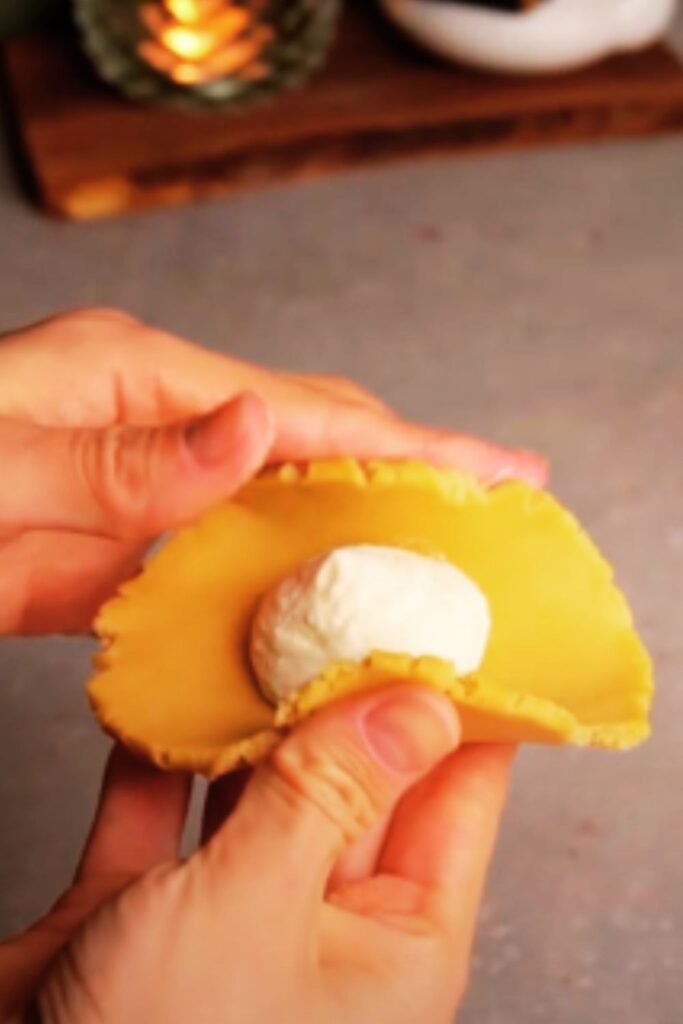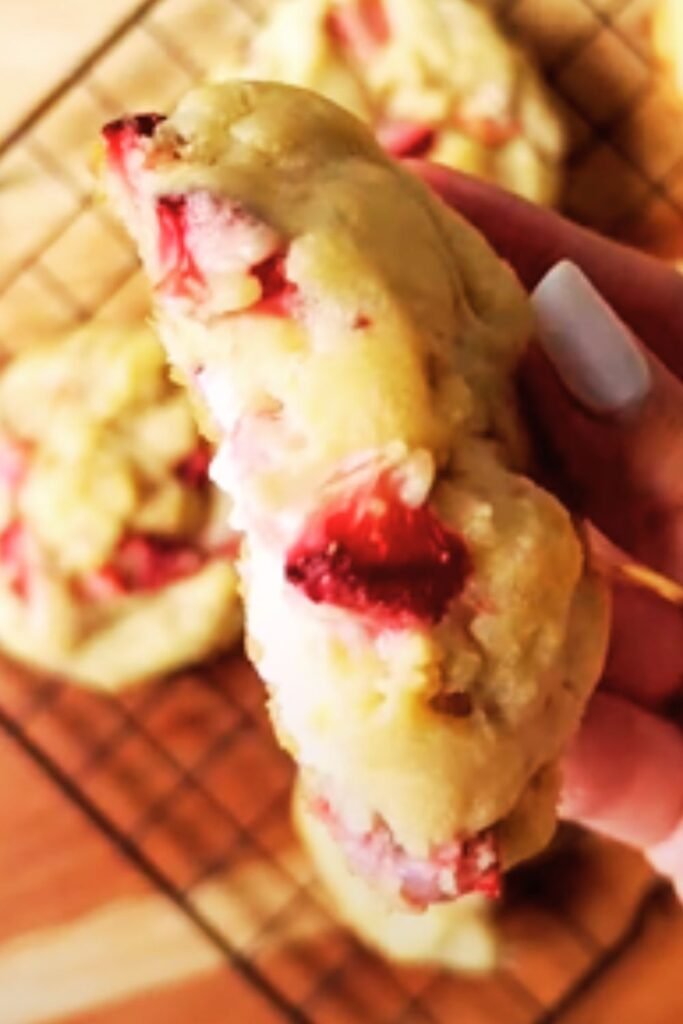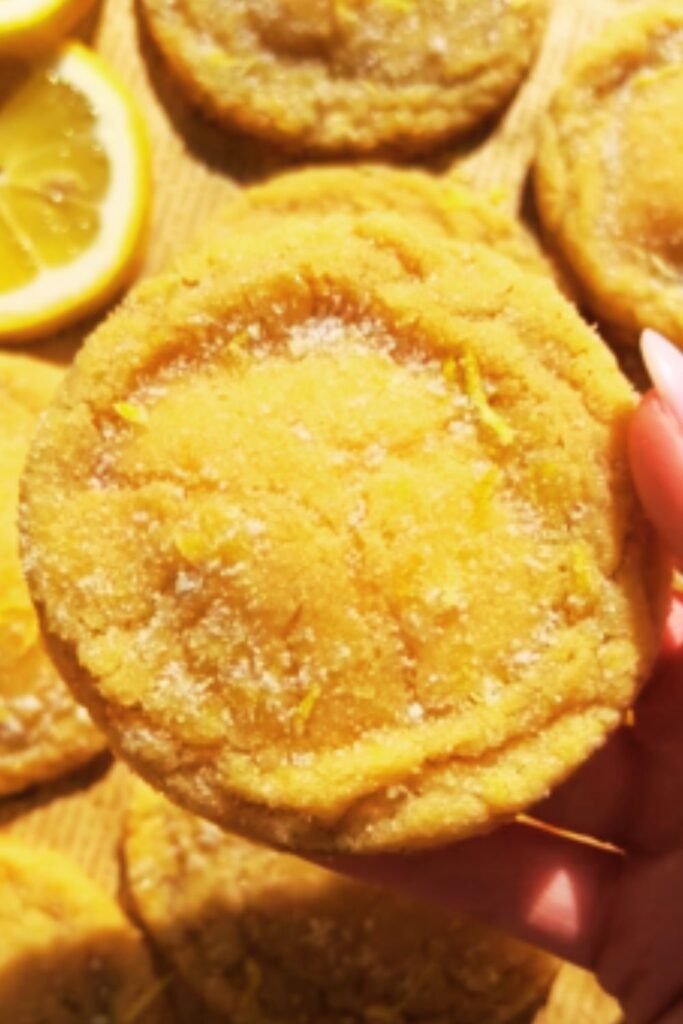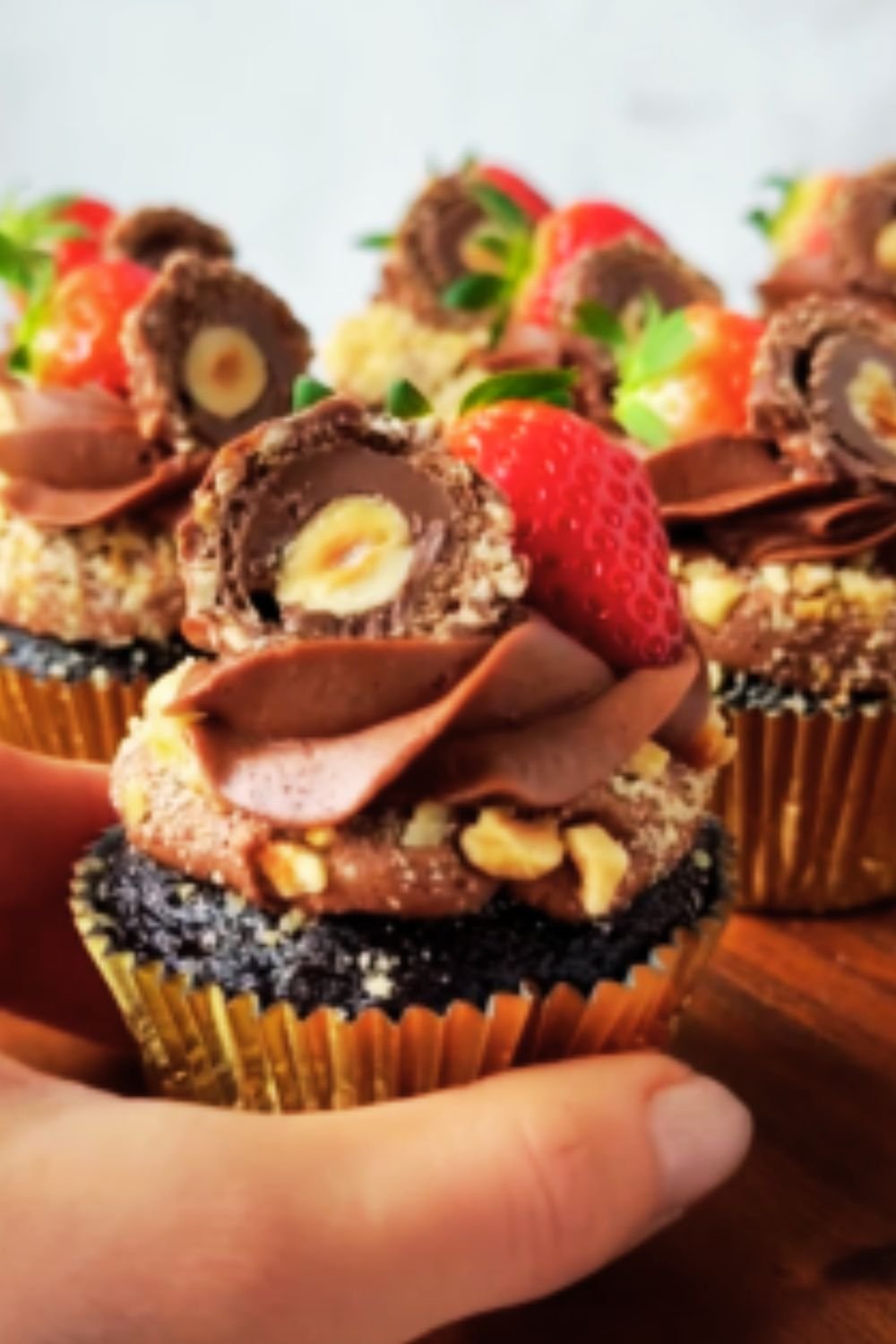When I first discovered cheesecake cookies, I couldn’t believe how perfectly they captured everything I love about both desserts. These delightful treats combine the rich, tangy flavor of cheesecake with the satisfying crunch and portability of cookies. After years of perfecting my recipe and technique, I’m excited to share everything I’ve learned about creating these irresistible treats that never fail to impress at gatherings, bake sales, or simply as an afternoon indulgence.
What Makes Cheesecake Cookies Special
Cheesecake cookies represent a brilliant culinary innovation that solves many of the challenges associated with traditional cheesecake. While I adore classic cheesecake, it requires careful preparation, lengthy baking times, and delicate handling. These cookies, however, deliver that beloved cheesecake flavor in a format that’s both accessible and portable.
The magic lies in incorporating cream cheese directly into a cookie dough base, creating treats that maintain the signature tang and richness of cheesecake while offering the familiar comfort of cookies. Each bite provides a perfect balance of textures—slightly crispy edges giving way to a soft, creamy center that melts beautifully on your tongue.
Key Characteristics
Texture Profile: Unlike traditional cookies, cheesecake cookies offer a unique mouthfeel. The exterior develops a gentle crispness during baking, while the interior remains tender and almost cake-like. This dual texture creates an eating experience that’s both satisfying and luxurious.
Flavor Complexity: The cream cheese provides a subtle tanginess that prevents these cookies from becoming overly sweet. This balance makes them sophisticated enough for adult palates while remaining approachable for children.
Versatility Factor: These cookies serve as an excellent canvas for various flavor additions and modifications, making them adaptable to different seasons, occasions, and personal preferences.
Essential Ingredients and Their Roles
Understanding each ingredient’s function helps ensure consistent results every time you bake these cookies. I’ve learned through countless batches that quality ingredients make a significant difference in the final product.

Primary Components
| Ingredient | Amount | Purpose | Quality Tips |
|---|---|---|---|
| Cream Cheese | 8 oz (softened) | Provides signature tang and creamy texture | Use full-fat, block-style cream cheese for best results |
| Unsalted Butter | 1/2 cup (softened) | Adds richness and helps create proper texture | European-style butter enhances flavor |
| Granulated Sugar | 3/4 cup | Sweetens and helps with browning | Fine granulation dissolves better |
| Brown Sugar | 1/4 cup (packed) | Adds moisture and subtle molasses notes | Light brown sugar works best |
| Large Egg | 1 whole | Binds ingredients and adds structure | Room temperature eggs incorporate easier |
| Vanilla Extract | 2 teaspoons | Enhances overall flavor profile | Pure extract superior to imitation |
| All-Purpose Flour | 2 cups | Provides structure and stability | Measure by weight for accuracy |
| Baking Powder | 1 teaspoon | Creates gentle lift | Check expiration date for potency |
| Salt | 1/4 teaspoon | Balances sweetness and enhances flavors | Fine sea salt preferred |
Optional Flavor Enhancers
Lemon Zest: Adding one tablespoon of fresh lemon zest brightens the overall flavor and complements the cream cheese beautifully. I always use organic lemons and wash them thoroughly before zesting.
Almond Extract: A quarter teaspoon of pure almond extract adds sophistication and depth. Be careful not to overdo it, as almond extract can quickly become overwhelming.
Graham Cracker Crumbs: Incorporating half a cup of finely crushed graham crackers into the dough creates a more authentic cheesecake experience and adds textural interest.
Step-by-Step Preparation Method
Creating perfect cheesecake cookies requires attention to detail and proper technique. I’ve refined this process over years of baking, and these steps consistently produce excellent results.
Preparation Phase
Before beginning any mixing, I ensure all ingredients reach room temperature. This step, often overlooked by novice bakers, significantly impacts the final texture. Cold cream cheese won’t incorporate smoothly, leading to lumpy dough and uneven cookies.
Temperature Check: Cream cheese should yield slightly to gentle pressure but not feel warm or soft. Butter should hold an indent when pressed but not be melting. Eggs should feel neutral to the touch, not cold from refrigeration.
Equipment Setup: I preheat my oven to 350°F (175°C) and line baking sheets with parchment paper. Using parchment prevents sticking and promotes even browning, while silicone mats can sometimes cause cookies to spread too much.
Mixing Process
Step 1: Cream Base Ingredients In a large mixing bowl, I cream together the softened cream cheese and butter until the mixture becomes light and fluffy. This process typically takes 3-4 minutes with an electric mixer on medium speed. Proper creaming incorporates air, resulting in lighter cookies.
Step 2: Add Sugars I gradually add both granulated and brown sugars, continuing to beat until well combined. The mixture should appear pale and increased in volume. Scraping down bowl sides ensures even incorporation.
Step 3: Incorporate Wet Ingredients Next, I add the egg and vanilla extract, mixing just until combined. Overmixing at this stage can develop gluten in the flour, leading to tough cookies.
Step 4: Combine Dry Ingredients In a separate bowl, I whisk together flour, baking powder, and salt. This step ensures even distribution of leavening agents throughout the flour.
Step 5: Final Assembly I gradually add the dry ingredients to the wet mixture, mixing on low speed until just combined. The dough should be soft and slightly sticky but hold together when formed into balls.

Baking Techniques for Perfect Results
Achieving consistently perfect cheesecake cookies requires understanding how these unique ingredients behave during baking. Unlike traditional cookies, the cream cheese content makes these more delicate and prone to spreading if not handled properly.
Shaping and Spacing
I use a medium cookie scoop or tablespoon to portion the dough, creating uniform balls approximately 1.5 inches in diameter. Consistent sizing ensures even baking and professional appearance.
Spacing Considerations: These cookies spread moderately during baking, so I place them about 2 inches apart on the baking sheet. Overcrowding leads to merged cookies that bake unevenly.
Chilling Option: For cookies with more defined edges, I sometimes chill the shaped dough balls for 15-20 minutes before baking. This step firms up the butter and cream cheese, reducing spread.
Baking Timeline
| Phase | Time | Temperature | Visual Cues |
|---|---|---|---|
| Initial Bake | 8 minutes | 350°F | Edges just beginning to set |
| Middle Phase | 4-6 minutes | 350°F | Light golden edges forming |
| Final Phase | 2-3 minutes | 350°F | Centers appear just set |
| Total Time | 12-15 minutes | 350°F | Golden edges, pale centers |
Doneness Indicators: Unlike traditional cookies that brown significantly, cheesecake cookies remain relatively pale. The edges should be lightly golden, and the centers should appear just set but still soft. They’ll continue cooking slightly on the hot baking sheet after removal.
Cooling Process: I allow cookies to rest on the baking sheet for 5 minutes before transferring to a wire rack. This brief resting period prevents breakage while ensuring they don’t continue cooking.
Troubleshooting Common Issues
Through years of making these cookies, I’ve encountered and solved various challenges. Understanding these common issues helps ensure success every time.
Spreading Problems: Excessive spreading usually results from warm dough or insufficient flour. If dough feels too soft, chill it for 30 minutes before baking. Adding an extra 2-3 tablespoons of flour can also help.
Dense Texture: Overmixing after adding flour develops gluten, creating dense cookies. Mix just until ingredients combine, even if small flour streaks remain visible.
Cracking Issues: Rapid temperature changes cause cracking. Ensure ingredients are properly tempered and avoid opening the oven door frequently during baking.
Uneven Browning: Oven hot spots or improper rack placement cause uneven results. Rotate baking sheets halfway through baking time and use the center rack position.
Creative Variations and Flavor Combinations
One aspect I particularly enjoy about cheesecake cookies is their adaptability. The base recipe serves as an excellent foundation for numerous variations that keep these treats exciting and seasonal.

Fruit-Inspired Variations
Strawberry Cheesecake Cookies: I fold in 1/2 cup of freeze-dried strawberry pieces and add a few drops of natural red food coloring for visual appeal. The freeze-dried fruit provides intense flavor without adding moisture that could affect texture.
Blueberry Lemon: Fresh or dried blueberries (3/4 cup) combined with lemon zest create a bright, summery variation. I toss the blueberries in a light coating of flour to prevent sinking during baking.
Cherry Vanilla: Dried cherries (1/2 cup) paired with extra vanilla extract and a touch of almond extract creates an elegant flavor profile reminiscent of classic cheesecake toppings.
Chocolate Combinations
Chocolate Chip Cheesecake: Adding 3/4 cup of mini chocolate chips transforms these into an indulgent treat that appeals to chocolate lovers while maintaining the cheesecake character.
Double Chocolate: Substituting 1/4 cup of flour with cocoa powder creates chocolate cheesecake cookies. I often add white chocolate chips to complement the cocoa.
Cookies and Cream: Crushing chocolate sandwich cookies and folding them into the dough creates a playful variation that children especially enjoy.
Seasonal Specialties
Pumpkin Spice: During autumn, I add 1/2 cup of pumpkin puree and traditional spices (cinnamon, nutmeg, ginger) for a seasonal twist. The extra moisture requires reducing other liquids slightly.
Gingerbread: Holiday spices (ginger, cinnamon, cloves, molasses) transform these into festive treats perfect for winter celebrations.
Eggnog: During winter holidays, I substitute some vanilla with rum extract and add nutmeg for an eggnog-inspired flavor.
Storage and Freshness Tips
Proper storage maintains these cookies’ unique texture and prevents the cream cheese from spoiling. I’ve developed specific storage methods that keep them fresh for extended periods.
Short-Term Storage
Room Temperature: In airtight containers, these cookies maintain quality for 3-4 days at room temperature. I place parchment paper between layers to prevent sticking.
Refrigeration: For longer freshness, I store them in the refrigerator for up to one week. The cool temperature actually enhances their texture, making them slightly firmer and more cheesecake-like.
Long-Term Preservation
Freezing Baked Cookies: Completely cooled cookies freeze beautifully for up to three months. I wrap them individually in plastic wrap, then place in freezer bags with dates marked clearly.
Freezing Dough: Shaped dough balls can be frozen on baking sheets, then transferred to bags once solid. Frozen dough bakes directly from frozen, adding 1-2 extra minutes to the baking time.
Freshness Revival
Softening Method: If cookies become too firm, I place a slice of bread in the storage container overnight. The cookies absorb moisture from the bread, restoring their soft texture.
Warming Technique: Briefly warming day-old cookies in a 200°F oven for 2-3 minutes revives their fresh-baked appeal.
Nutritional Considerations and Dietary Adaptations
Understanding the nutritional profile of these cookies helps with portion control and dietary planning. I’ve also developed several adaptations for common dietary restrictions.
Nutritional Profile
| Component | Per Cookie (approx.) | Daily Value % |
|---|---|---|
| Calories | 185 | 9% |
| Total Fat | 8g | 12% |
| Saturated Fat | 5g | 25% |
| Cholesterol | 35mg | 12% |
| Sodium | 95mg | 4% |
| Carbohydrates | 25g | 8% |
| Protein | 3g | 6% |
| Calcium | 45mg | 4% |
Dietary Modifications
Reduced Sugar: I successfully substitute up to half the sugar with sugar alternatives like erythritol or stevia blend. The texture changes slightly, becoming less tender, but the flavor remains excellent.
Gluten-Free Option: Replacing all-purpose flour with a quality gluten-free blend (containing xanthan gum) produces acceptable results. I add an extra tablespoon of the blend to compensate for different absorption rates.
Lower Fat Version: Using reduced-fat cream cheese and butter substitutes creates lighter cookies, though the texture becomes less rich. I don’t recommend fat-free products, as they contain stabilizers that affect baking.
Dairy-Free Alternative: Vegan cream cheese alternatives work reasonably well, though the tang is less pronounced. I add a teaspoon of lemon juice to enhance the characteristic flavor.
Serving Suggestions and Presentation Ideas
These versatile cookies shine in various serving contexts, from casual family gatherings to elegant entertaining. I’ve discovered numerous presentation methods that enhance their appeal.
Coffee Accompaniment: The tangy cream cheese flavor pairs beautifully with coffee, making these excellent for morning meetings or afternoon coffee breaks. The richness complements both mild and bold coffee varieties.
Dessert Platters: I arrange these cookies alongside fresh berries and a light dusting of powdered sugar for elegant presentation. The contrast of colors and textures creates visual interest.
Ice Cream Sandwiches: Slightly warm cookies sandwiched around vanilla or strawberry ice cream create an elevated dessert experience. I press the edges gently to create attractive presentations.
Gift Packaging: These cookies travel well and make excellent gifts. I package them in decorative tins with parchment paper layers, including care cards with storage instructions.
Advanced Techniques for Professional Results
After mastering the basic recipe, several advanced techniques can elevate these cookies to bakery-quality status.
Temperature Control Mastery
Dough Temperature: I monitor dough temperature during mixing, aiming for 68-70°F. Cooler dough holds its shape better during baking, while warmer dough spreads more readily.
Oven Calibration: Using an oven thermometer ensures accuracy, as many home ovens run hot or cold. Consistent temperature control is crucial for even results across multiple batches.
Staged Baking: For large batches, I prepare multiple pans and bake in succession, keeping unbaked dough chilled between batches to maintain consistency.
Texture Optimization
Cream Cheese Selection: Block cream cheese produces superior results compared to whipped varieties. The denser texture incorporates more evenly and provides better structure.
Flour Handling: I measure flour by weight (280g per 2 cups) for consistency. Sifting flour before measuring creates lighter cookies, while packed flour yields denser results.
Mixing Speed Control: Starting with low speeds and gradually increasing prevents flour from flying while ensuring thorough incorporation.

Frequently Asked Questions
Q: Can I make these cookies ahead of time for a party? Yes, these cookies actually improve after sitting for a day, as the flavors meld together. I often bake them the day before serving and store them covered at room temperature. For longer advance preparation, I freeze the baked cookies up to a month ahead.
Q: Why do my cookies spread too much during baking? Excessive spreading usually indicates warm dough or insufficient flour. Chill your dough for 30 minutes before baking, and ensure you’re measuring flour correctly. Overly soft butter can also cause spreading issues.
Q: How can I make these cookies more tangy like traditional cheesecake? Increase the cream cheese to 10 ounces and add a tablespoon of sour cream to the mixture. You can also include a teaspoon of lemon juice for extra tang without affecting the texture significantly.
Q: What’s the best way to transport these cookies for events? Use sturdy containers with tight-fitting lids and place parchment paper between layers. These cookies are more delicate than traditional cookies, so avoid stacking too high. For very warm weather, consider using insulated containers with ice packs.
Q: Can I double this recipe successfully? Yes, this recipe doubles well. Use a large mixing bowl and ensure all ingredients are properly incorporated. You may need to mix in batches if your mixer bowl isn’t large enough for the full double batch.
Q: How do I know when these cookies are perfectly done? Unlike traditional cookies that brown significantly, cheesecake cookies remain pale with just lightly golden edges. The centers should appear set but still soft to the touch. They’ll firm up as they cool.
Q: What causes my cookies to crack on top? Cracking usually results from overmixing the dough or temperature fluctuations during baking. Mix just until ingredients combine, and avoid opening the oven door frequently during baking.
Q: Can I add fresh fruit to these cookies? Fresh fruit adds too much moisture and can make cookies soggy. Use freeze-dried fruit, dried fruit, or fruit preserves instead. If using preserves, reduce other liquids in the recipe slightly.
Q: How do I prevent my cookies from sticking to the pan? Always use parchment paper or silicone baking mats. These cookies contain more moisture than traditional cookies due to the cream cheese, making them more prone to sticking on unlined pans.
Q: What’s the secret to getting the perfect cheesecake flavor? Use high-quality, full-fat block cream cheese and don’t overbake. The cream cheese flavor becomes more pronounced when the cookies aren’t cooked too long. Adding a small amount of sour cream or lemon juice also enhances the characteristic tang.
These cheesecake cookies represent the perfect marriage of two beloved desserts, offering all the flavor complexity of cheesecake in a convenient, portable format. Through careful attention to ingredients, technique, and timing, anyone can master these delightful treats that never fail to impress. Whether you’re baking for family, friends, or special occasions, these cookies deliver consistent results and endless possibilities for creative variation.


